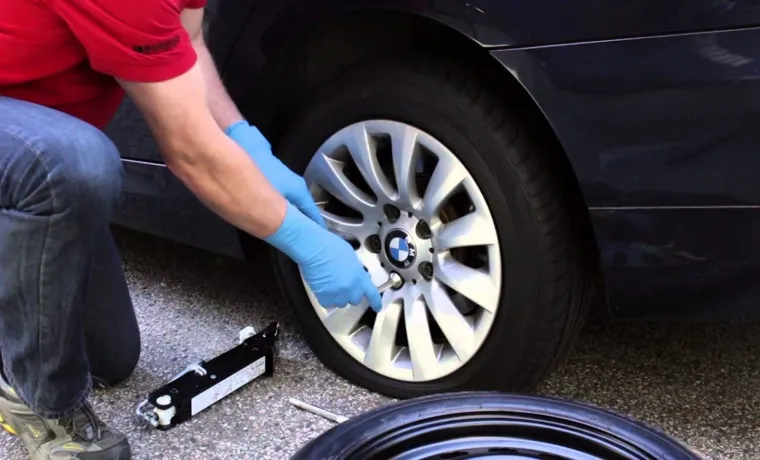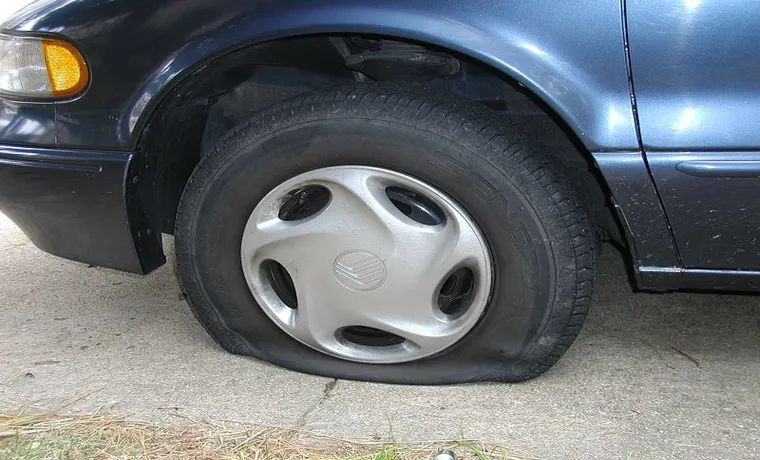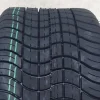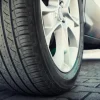Picture this: you’re cruising down the road, windows rolled down, enjoying the warm breeze, and then, without any warning, you hear that dreaded thud-thud-thud sound coming from one of your tires. Yup, you’ve got a flat, and now you’re wondering what to do next. Don’t worry; dealing with a flat tire is not rocket science.
With these five easy steps, you’ll know what to do in no time. So, let’s dive in and get your car back on the road again!
Table of Contents
Assess the Damage
If you find yourself with a flat tire, the first thing to do is assess the damage. If you hear a loud pop or feel a sudden jerk while driving, then pull over as soon as it’s safe to do so. Once you’ve stopped your car, turn off the engine and engage your emergency brake.
Then, check the tire to see if it’s completely flat or just low on air. If it’s fully deflated, you’ll need to replace it with your spare tire. If it’s only partially flat, then you may be able to reinflate it with a tire inflator kit.
Keep in mind that driving on a flat tire can cause further damage to your car and make it unsafe to drive. So, it’s always best to take action as soon as you suspect a problem. With these tips, you’ll know what to do for a flat tire and be back on the road in no time.
Inspect the Tire
Before assessing the damage to your tire, make sure to thoroughly inspect it. Start by checking the tread depth to ensure it’s not worn down, as this can pose a safety risk. You can do this by inserting a penny with Lincoln’s head facing down into the tread – if you can see the top of Lincoln’s head, it’s time to replace the tire.
Next, look for any cuts, punctures, or bulges in the tire. Even small cuts or punctures can cause a flat tire or blowout if left unrepaired. If you spot any damage, it’s important to take your tire to a professional as soon as possible to have it repaired or replaced.
Remember that neglecting tire damage can have serious consequences, so always take the time to inspect your tires regularly.

Check the Spare
When checking your spare tire, it’s essential to assess the damage before anything else. The last thing you want is to put on a spare tire that’s already damaged, which could lead to more problems down the road. One way to assess the damage on your spare tire is to give it a once-over and look for any visible signs of wear and tear.
Check for any cracks or cuts in the rubber, as well as any bulges or bubbles on the tire’s surface. If your tire looks questionable, it may be best to replace it with a new one. Remember, your spare tire is there for emergencies.
It’s vital to make sure it’s in good condition to avoid any complications when you need it the most.
Evaluate the Location and Time
When assessing the damage of a location, it is important to evaluate the extent of the destruction and determine what steps need to be taken for repairs. This can be done by inspecting the area and checking for any hazards that will affect the safety of individuals. One must also consider the impact of the time of the day that the damage occurred, as well as the location.
For instance, flash floods may require immediate evacuation, while a fallen tree may not pose an emergency risk. In addition, the extent of damage may vary depending on the location, such as a flood-prone area or a high-traffic zone. Overall, evaluating the location and time of the event can help determine the level of urgency and required response to effectively address the situation.
Replace the Tire
If you find yourself with a flat tire, don’t panic! The first thing you should do is pull over to a safe location, away from traffic. Next, make sure your car is in Park and the emergency brake is engaged. Once you’re safely parked, it’s time to replace the tire.
Start by getting out your spare tire, jack, and lug wrench. Loosen the lug nuts on the flat tire, but don’t remove them just yet. Place the jack under your car at the designated spot, making sure it’s secure.
Carefully raise the car until the flat tire is off the ground. Now remove the lug nuts and take off the flat tire. Place the spare tire onto the hub and tighten the lug nuts as much as you can by hand.
Use the wrench to finish tightening the lug nuts, working in a star pattern to ensure even pressure. Finally, lower the car back down to the ground and use the wrench again to make sure the lug nuts are securely tightened. With your new tire in place, you’re ready to get back on the road! Remember to get your flat tire fixed or replaced as soon as possible.
Use a Spare Tire
Replacing a tire with a spare tire is an essential skill every driver should have. If you experience a flat tire or a blowout, don’t panic. First, find a safe place to park your car, away from traffic.
Next, locate your spare tire. In most vehicles, it’s stored in the trunk, under the cargo area, or beneath the car. Once you’ve found it, check its condition to ensure it’s in good shape.
Before jacking up your vehicle, loosen the lug nuts on the flat tire. Then, lift your car with a jack and remove the lug nuts and the tire. Now, slide the spare tire onto the wheel studs and tighten the lug nuts by hand.
Finally, lower your car, and using a lug wrench, tighten the lug nuts as much as possible. Remember to replace your flat tire with a new one as soon as possible. With these steps, you’ll be back on the road in no time.
Use a Tire Repair Sealant
If you’re dealing with a flat tire, you may be wondering whether you should replace it entirely, or if a tire repair sealant could do the trick. Well, the answer depends on the severity of the damage to your tire. For small punctures, a tire repair sealant can be an effective temporary solution.
However, it’s important to note that a sealant won’t work for larger, more extensive damage. In those cases, you’ll need to completely replace the tire. It’s always best to consult with a professional to determine the best course of action for your specific situation.
In the meantime, be prepared by keeping a tire repair kit in your vehicle, so you can quickly address any flat tires that may arise on the road.
Call for Professional Help
If you find yourself in the unfortunate situation where you need to replace a tire on your vehicle, it may be time to call for professional help. While it may seem like a simple task, there are important safety considerations to keep in mind. If you’re not familiar with the process or don’t have the right tools, it’s best to leave it to the experts.
They have the necessary equipment to remove the old tire and replace it with a new one, making sure it’s properly balanced and aligned. Furthermore, they can help you choose the right tire for your vehicle, taking into account factors such as climate, driving style, and load capacity. So next time you’re in need of a tire replacement, don’t hesitate to call for professional help – it could save you a lot of time and hassle in the long run.
Prevent Flat Tires in the Future
Flat tires can be quite frustrating, and they can happen at the most inopportune times. However, there are steps you can take to prevent flat tires from occurring in the future. One of the most important things you can do is to ensure that your tires are properly inflated.
When your tires are underinflated, the sidewalls are more susceptible to damage from road hazards, which can cause punctures and flats. Additionally, check your tires for any signs of wear and tear, such as cracks or bulges. Worn tires are more prone to blowouts, which can lead to dangerous situations on the road.
Another key factor to consider is the age of your tires. Tires have a lifespan of roughly six years, after which they should be replaced regardless of the condition. Proper maintenance and regular inspections can help keep your tires in good condition, which can help prevent flat tires in the future.
So, next time you’re on the road, make sure your tires are properly inflated, in good condition, and not too old to provide maximum safety.
Perform Regular Tire Maintenance
Regular tire maintenance is a crucial step in preventing flat tires in the future. While it may seem like a hassle to check your tires regularly, it can save you a lot of trouble in the long run. One of the easiest things you can do is to check your tire pressure every month.
Low tire pressure can cause your tires to wear unevenly and increase the risk of a blowout. You should also inspect your tires for any signs of wear and tear, such as cracks or bulges. If you spot any damage, it’s important to have your tires repaired or replaced immediately.
Additionally, rotating your tires every 5,000 to 8,000 miles can help prevent uneven wear and extend the life of your tires. By taking the time to perform these simple maintenance tasks, you can avoid the frustration and potential danger of a flat tire. So, next time you’re tempted to skip tire maintenance, remember that the time and effort you put in now can save you a headache and a roadside emergency later on.
Avoid Road Hazards
Preventing flat tires is an essential element of road safety, as blowouts can lead to accidents or stranded cars. One effective way to avoid road hazards that cause flat tires is to keep an eye on the road, scanning for potential dangers such as potholes, debris, and sharp objects. Maintaining a safe distance from other cars can provide extra time to react to sudden obstacles on the road, reducing the risk of hitting a sharp object or debris.
Additionally, driving at a moderate speed can help you avoid sudden swerves, which could cause tire damage. Finally, checking your tires’ pressure regularly and having them rotated and balanced can help prevent wear and tear, increasing your tires’ lifespan and avoiding flat tires. By following these tips, you can reduce the risk of encountering road hazards and keep your car’s tires in top shape.
Conclusion
In the end, the key to handling a flat tire is to stay cool and collected. Don’t panic, don’t get flustered, and whatever you do, don’t kick the tire in frustration (it never helps, trust us). Instead, take a deep breath, follow the steps we’ve outlined, and you’ll be back on the road in no time.
And who knows, maybe you’ll even impress your friends with your newfound tire-changing skills! Just remember the golden rule of flat tires: stay calm, stay safe, and always carry a spare.”
FAQs
What are the common causes of a flat tire?
Some common causes of a flat tire can include punctures from sharp objects like nails or glass, damage to the tire sidewall, a leaking valve stem, or improper inflation pressure.
How can I tell if I have a flat tire?
Signs of a flat tire may include a thumping sound or vibration while driving, difficulty steering, or the tire appearing visibly flat when inspected.
What should I do if I have a flat tire while driving?
Slowly pull over to a safe location on the side of the road. Turn on your hazard lights and place your vehicle in park or neutral. Remove the spare tire and tools from your trunk and follow the instructions in your owner’s manual to change the tire.
How long does it take to change a flat tire?
The time it takes to change a flat tire can vary depending on your experience level and the location and difficulty of the tire change. It can take anywhere from 15 to 45 minutes to change a flat tire.
Do I need to replace a tire after a flat?
It depends on the severity and cause of the flat tire. If the tire has a minor puncture that is repairable, it may only require a patch. However, if there is significant damage to the tire sidewall or other factors, it may require replacement.
Can I still drive on a flat tire?
Driving on a flat tire is highly discouraged as it can damage the tire and potentially cause a dangerous situation while driving. It is recommended to pull over to a safe location and change the tire as soon as possible.
Should I check the air pressure in my spare tire?
Yes, it is important to regularly check the air pressure in your spare tire to ensure it is properly inflated and ready to use in case of a flat tire emergency.



